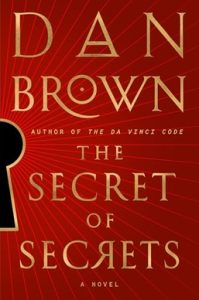Introduction
At Sarasavi Book Shop, we believe in the power of great literature to shape and enrich lives. Whether you’re a seasoned reader or new to the world of books, we are passionate about bringing you works that are timeless, transformative, and thought-provoking. One such masterpiece is War and Peace by Leo Tolstoy, a novel that not only offers a window into Russia’s tumultuous past but also delves deeply into the complexities of human nature. With its intricate narrative, philosophical insights, and unforgettable characters, War and Peace stands as one of the greatest novels ever written.
In this comprehensive review, we’ll explore Tolstoy’s extraordinary work and why it remains an essential read for anyone who appreciates literature that transcends time and place.
Plot Summary
Tolstoy’s War and Peace weaves together the stories of several aristocratic families, primarily focusing on Pierre Bezukhov, Andrei Bolkonsky, and Natasha Rostova, whose personal dramas unfold against the backdrop of Napoleon’s invasion of Russia. Spanning years and multiple generations, the novel intricately captures the growth and transformation of these characters as they navigate war, love, loss, and self-discovery.
- Pierre Bezukhov is the awkward but well-meaning heir to a vast fortune, embarking on a journey of self-discovery. His quest for meaning leads him from youthful idealism to a deeper understanding of his place in the world.
- Andrei Bolkonsky, a disillusioned war hero, experiences profound personal growth after suffering devastating losses, including the death of his wife. His transformation from a quest for glory to spiritual introspection is one of the novel’s central arcs.
- Natasha Rostova starts as a naive and romantic young woman but matures through heartbreak, loss, and the eventual realization of her own strength. Her journey mirrors the emotional and psychological growth of many of the characters in the novel.
The novel intertwines these personal stories with historical events, from the Napoleonic Wars to the Russian political landscape, making War and Peace both a deeply personal and historically rich narrative.
Themes and Analysis
1. The Nature of War and Peace
One of the most profound aspects of War and Peace is Tolstoy’s exploration of the nature of war and peace. Through the novel, Tolstoy critiques the glorification of war and exposes its chaos, brutality, and dehumanizing effects. War is portrayed as a force beyond individual control, a natural and almost inevitable element of history that shapes human lives in ways beyond comprehension.
In contrast, peace is not merely the absence of conflict but a state of personal reflection, growth, and moral clarity. For characters like Pierre and Andrei, finding peace means reconciling their personal desires with the larger forces of history and destiny.
2. Fate and Free Will
Tolstoy questions the role of free will in shaping both personal destinies and historical events. While the characters make choices, Tolstoy suggests that larger forces—such as the will of the people and the course of history—often shape the outcomes of those decisions. The novel poses a philosophical question: to what extent can we control our own fate, and to what degree are we shaped by the events that occur around us?
Pierre’s struggle with these questions reflects the tension between individual agency and historical determinism. His journey ultimately suggests that true understanding of life comes from surrendering to the flow of events and finding peace in one’s own moral choices.
3. Spiritual Growth and the Search for Meaning
One of the most compelling elements of War and Peace is the spiritual journeys undertaken by the characters. Pierre Bezukhov’s quest for meaning is central to the narrative. From being a naive, somewhat aimless aristocrat to evolving into a thoughtful and reflective man, Pierre’s journey reflects the novel’s broader theme of spiritual awakening and personal growth.
Andrei Bolkonsky’s transformation, too, is defined by his search for a deeper purpose, especially after his personal losses. His story suggests that peace and fulfillment are found not in glory or power, but in introspection and spiritual clarity.
Tolstoy’s deep engagement with spiritual and philosophical themes encourages readers to reflect on their own lives and the ways in which personal trials can lead to greater wisdom and understanding.
4. The Interplay of Personal and Political Histories
Another remarkable aspect of War and Peace is Tolstoy’s treatment of history. The novel is not just a backdrop for the personal stories of Pierre, Andrei, and Natasha; it is an integral part of the narrative. Tolstoy seamlessly intertwines real historical events—the Napoleonic invasion, the Russian victory, the shifting political landscape—with the personal lives of the characters. This fusion of the grand with the intimate makes the novel a profound exploration of how history shapes individuals and how individuals shape history.
Writing Style and Structure
Tolstoy’s writing in War and Peace is renowned for its depth and richness. His narrative style captures the grandeur of historical events while allowing for intimate psychological insights into his characters. Through long passages of reflection, dialogue, and historical analysis, Tolstoy takes readers on a journey that is as intellectually stimulating as it is emotionally powerful.
The novel’s structure is sprawling, with multiple characters and shifting timelines, which may seem daunting at first. However, this complexity is part of what makes War and Peace such a rewarding experience. Tolstoy’s ability to balance these elements—action, reflection, history, and personal drama—creates a narrative that is rich in texture and profound in meaning.
Why War and Peace Still Matters
At Sarasavi Book Shop, we believe that literature has the power to transcend time, providing insights into the human condition that remain relevant regardless of the era. War and Peace is not just a historical novel; it is a timeless exploration of life’s most profound questions. The themes of love, loss, war, peace, and spiritual growth are as resonant today as they were when Tolstoy first wrote them.
The novel’s characters are not mere historical figures—they are complex, relatable individuals whose struggles and triumphs echo the experiences of people in every generation. The book’s vast scope, philosophical depth, and intricate character development make it a must-read for anyone interested in literature that challenges the mind and stirs the heart.
Conclusion
War and Peace is a novel that offers something for every reader. Whether you are drawn to historical fiction, philosophical reflection, or complex character studies, Tolstoy’s work provides a rich and rewarding experience. At Sarasavi Book Shop, we are proud to bring you this masterpiece, knowing that it will continue to inspire, challenge, and captivate readers for generations to come.
If you haven’t yet read War and Peace, we encourage you to embark on this extraordinary journey through history and human emotion. The beauty of great literature lies in its ability to transport us beyond ourselves, and War and Peace is a shining example of how a book can offer deep insights into both the past and the present. We help great literature find its place in the hearts and minds of readers, and War and Peace is undoubtedly a book that should be on every reader’s shelf.






